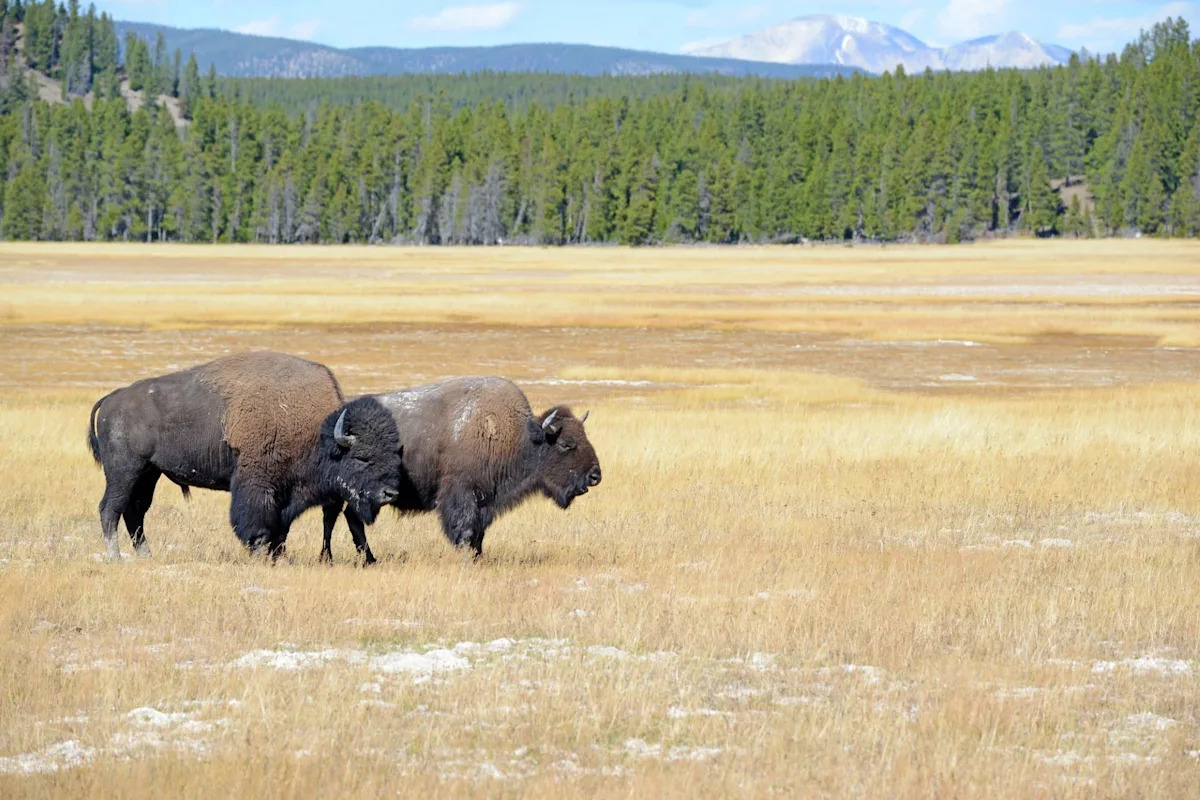
In Yellowstone National Park, bison aren’t just iconic wildlife; they’re quiet ecosystem engineers.
Once nearly wiped out, these massive grazers are now reshaping entire landscapes in ways scientists say could transform how we think about conservation, as reported by Phys.org.
Bison were hunted to near extinction in the 1800s, with only 23 surviving in Yellowstone by 1902. Thanks to long-running recovery efforts, their population has rebounded to about 5,000. Today, Yellowstone is home to one of the last remaining large, free-roaming herds in North America, traveling roughly 1,000 miles a year along a 50-mile migration corridor.
For decades, overgrazing has been recognized as detrimental, resulting in reduced plant diversity and compacted soils. But new research, published in Science, and led by scientists at Washington and Lee University, the National Park Service, and the University of Wyoming, found the opposite with Yellowstone’s bison.
As the herds graze heavily in river valleys, they supercharge the nitrogen cycle, producing plants that are 150% more nutritious than in ungrazed areas. By keeping plants short, dense, and nutrient-rich, bison help maintain biodiversity and healthier soils across Yellowstone’s grasslands.
“What we’re witnessing is that as bison move across the landscape, they amplify the nutritional quality and capacity of Yellowstone,” said co-author Bill Hamilton, per Phys.org. “Their grazing likely has important consequences for other herbivores and for the food web as a whole, similar to the changes that occurred in the Serengeti when the wildebeest population recovered.”
These findings reinforce the idea that restoring animal migrations can strengthen ecosystems. Stronger ecosystems have far-reaching effects, eventually benefiting humans too, from healthier soils that store carbon to landscapes that are more resilient to the Earth’s overheating.
The scientists of this study hope that these findings will inspire broader bison restoration efforts across North America, not just in fenced herds, but also in free-ranging, large-scale migrations.
Join our free newsletter for good news and useful tips, and don’t miss this cool list of easy ways to help yourself while helping the planet.
Disclaimer: This news has been automatically collected from the source link above. Our website does not create, edit, or publish the content. All information, statements, and opinions expressed belong solely to the original publisher. We are not responsible or liable for the accuracy, reliability, or completeness of any news, nor for any statements, views, or claims made in the content. All rights remain with the respective source.
